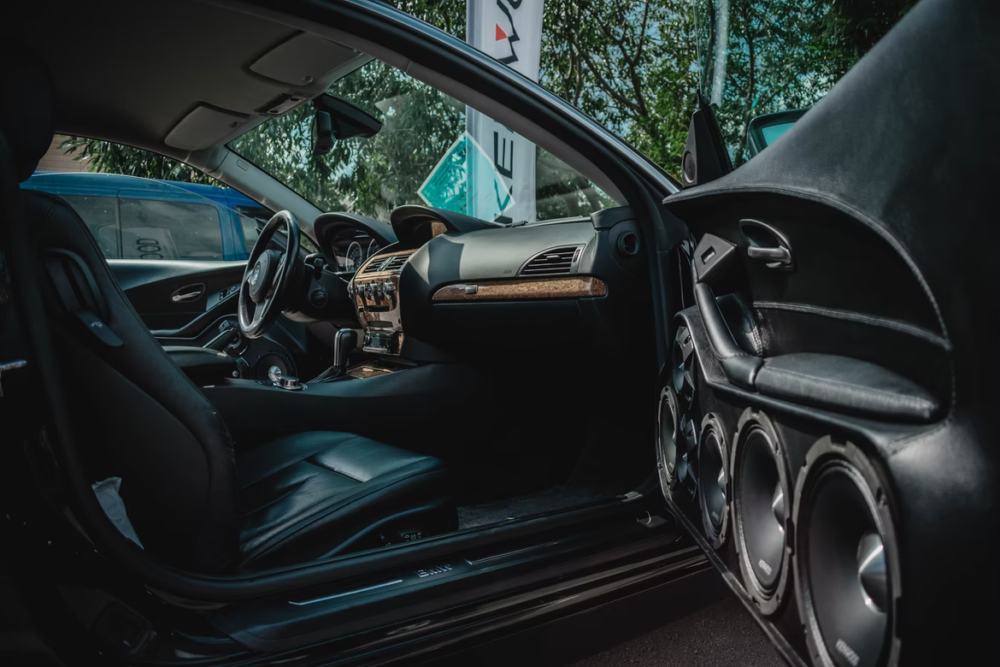Best Ways to Listen to Music in the Car
When you go on a long car trip, music is a must-have. It entertains you and keeps you from being lulled by the monotonous scenery. Music also brings comfort if you are used to listening to it at home or while working. It’s important, though, that the sound is clear and close to the original. Otherwise, it can become annoying.
For quality sound, you must have all the components of your audio system—not necessarily the best and the most expensive ones (though that would be an ideal solution). They should match each other in terms of output, voltage, capacity. You’ll probably be disappointed if you install the best under seat subwoofer available on the market and pair it with mediocre car speakers or listen to an MP3 player connected via an AUX cable. In order to get the most of your cool sub, you’ll need to have the entire output clear and strong, that’s why it’s necessary to balance your system by its capacity and sound quality.
Let’s take a look at all of the options for organizing high-quality audio in your vehicle. Read below about speakers, sources, and connection options.
Use Your Car Speaker System
Almost every car model has a built-in sound system. If you’re not an audiophile, this system will probably be enough for your needs. You can listen to the radio, a playlist on your smartphone, or any other audio transmitter. In premium cars, the audio system may be made by well-known brands and be of high quality.
Drivers who want good Hi-Fi generally install third-party speakers with larger cones, better output, or both. A subwoofer is frequently added to a system to boost the bass. It can be installed in various places in the car, including the trunk, under the driver’s seat, or even in the back seat.
If your car doesn’t have a speaker system, it doesn’t work well, or you don’t like the sound, you can install a new speaker system or utilize standalone speakers connected to your car’s head unit.
Listen to Music From Players and Smartphones
If you have a head unit with a USB port/SD Card slot, you can listen to your favorite music from a flash drive/SDCard. Simply insert it into the relevant slot, configure the playback and equalizer settings (if applicable), and enjoy several hours of high-quality music. Check what file formats preserve most of the sound in digital coding.
A CD player is another way to listen to rich audio without the compression effect. However, CDs are not the most convenient type of music storage, as they usually allow you to listen to no more than 40 minutes and require attention when handling (the disc can get scratched when replaced and must be stored in a CD sleeve/holder).
An MP3 player can be another source but for digital music. If you’re going to use this gadget to listen to music, check to see if an interface and a charger are compatible with your car (if you want to use the car system for the output).
The same is true with a smartphone. However, when using a smartphone to connect to the car’s head unit, you usually have more alternatives (through USB, AUX, Bluetooth). At the same time, taking calls or using the smartphone as a GPS tracker will cause occasional interruptions in the audio output.
Turn On the Radio
Radio is probably the only way to listen to an analog signal. The radio broadcast, however, can be interrupted on the road where the coverage is insufficient. Therefore, it is best not to rely solely on the radio during a long trip but to prepare another source to replace it when the signal fails.
Ways to Connect Your Audio Source
USB Port
The USB port is the optimal connection type for listening to digital audio in your car. It is compatible with most audio transmitters and allows you to listen to uncompressed audio.
AUX Port
The AUX port also has a wide range of compatible devices (including MP3 players and smartphones). Besides, it can be used to hook up headphones to your car’s head unit. AUX cables, on the other hand, do not transmit the full richness of the sound recorded in the demanding audio codecs (like WAV, FLAC, or AIFF). Nevertheless, if you’re not an audiophile who discerns every tiny detail in the audio stream, an AUX connection may suffice.
Options where the car unit is a direct player for a specific source (a built-in CD player, an MP3 player, or radio) usually provide the clearest and most powerful sound. This is achieved through the shortest possible path from the source to the speakers.
Bluetooth
Bluetooth is widely used for music transmission. Many modern cars include a BT receiver that allows you to play a list of songs stored on your device. You can also stream the music from apps like Spotify or iTunes. However, the quality of sound will depend on the protocol supported by your car’s head unit and your source.
